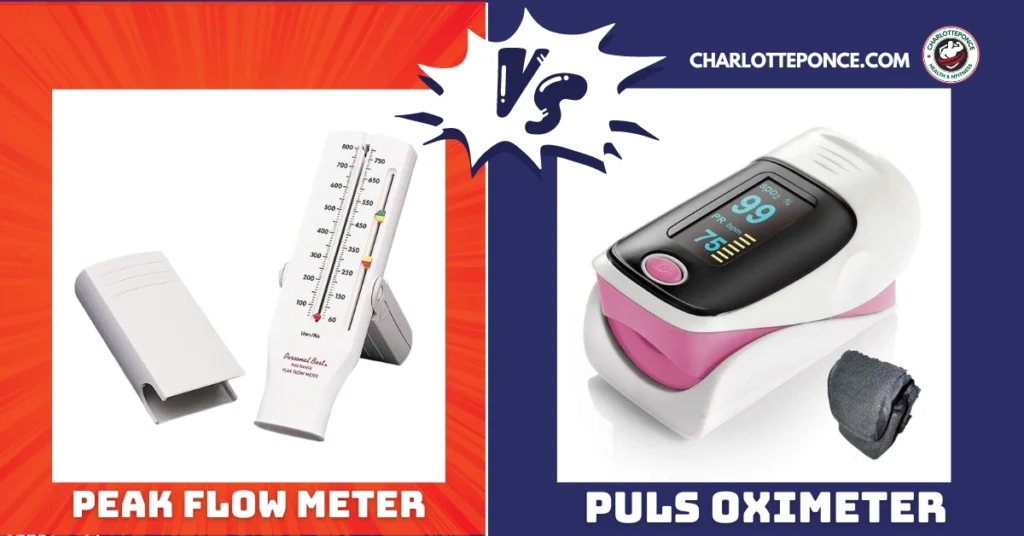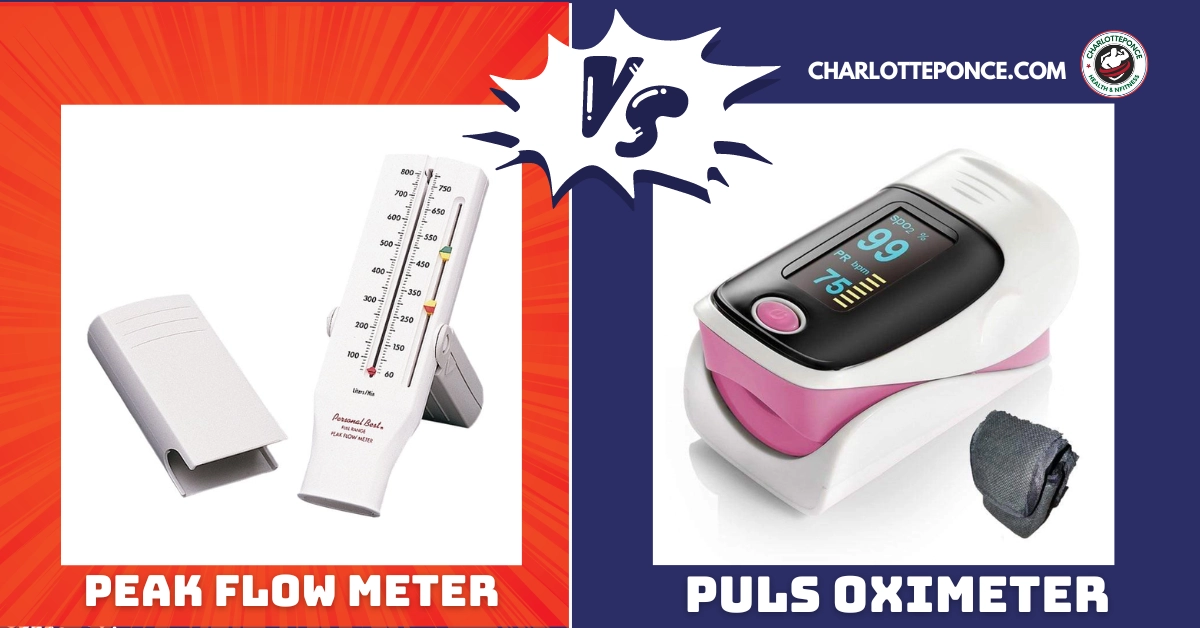When comparing a peak flow meter vs pulse oximeter, it’s important to understand their distinctive functions and areas of application. While a peak flow meter measures the maximum speed of air exhaled from the lungs, providing insights into asthma management, a pulse oximeter measures blood oxygen saturation, offering valuable information about respiratory function and potential hypoxemia.
Both devices have unique roles in monitoring respiratory health and can complement each other in providing comprehensive insights. When it comes to managing respiratory conditions, understanding the differences between a peak flow meter and a pulse oximeter is crucial. While a peak flow meter primarily assesses lung function by measuring the maximum speed of air exhaled from the lungs, it is particularly useful for monitoring asthma and identifying potential exacerbations.
On the other hand, a pulse oximeter measures blood oxygen saturation, providing valuable insights into respiratory function and potential hypoxemia, making it a valuable tool for various respiratory conditions, including asthma, COPD, and COVID-19. In clinical and home settings, these devices play a critical role in respiratory management, allowing individuals and healthcare professionals to monitor and assess lung function and oxygenation levels. Understanding their unique purposes and functionalities is essential for effective respiratory care.
Page Contents
ToggleWhat Is A Peak Flow Meter

A peak flow meter is a handheld device used to measure the maximum rate at which you can blow air out of your lungs. It is a simple and effective tool to monitor the function of your airways and is commonly used by individuals with asthma or other respiratory conditions. By tracking your peak flow readings regularly, you can determine how well your lungs are working and identify any changes or worsening of your symptoms.
Definition
A peak flow meter is a portable device that measures the maximum airflow rate that you can generate when exhaling forcefully. It consists of a small tube connected to a gauge, which displays the airflow rate in liters per minute. By blowing into the device, you can obtain a measurement that indicates the strength and function of your lungs at that particular moment.
Function
The primary function of a peak flow meter is to help individuals with asthma or other respiratory conditions monitor the airflow through their airways. By regularly measuring and recording their peak flow readings, these individuals can track changes in their lung function and adjust their medication or treatment plan accordingly.
Using a peak flow meter is simple and straightforward. You take a deep breath, place your lips around the mouthpiece, and blow out as hard and fast as you can. The device measures the peak flow rate in liters per minute and provides a numerical reading that represents the maximum airflow you were able to achieve.
Table: Comparison between Peak Flow Meter and Pulse Oximeter
| Peak Flow Meter | Pulse Oximeter | |
|---|---|---|
| Function | Measures maximum airflow rate | Measures oxygen saturation and heart rate |
| Usage | Used to monitor airway function in individuals with respiratory conditions | Used to measure oxygen levels in the blood |
| Measurement | Liters per minute | Percentage of oxygen saturation |
| Device | Handheld tube connected to a gauge | Clip-like device attached to finger or earlobe |
In conclusion, a peak flow meter is a valuable tool for individuals with respiratory conditions to monitor their lung function. It measures the maximum airflow rate and helps track changes in the airway function. In comparison, a pulse oximeter measures oxygen saturation and heart rate. While both devices serve different purposes, they can be used together to provide a more comprehensive assessment of respiratory health.
What Is A Pulse Oximeter
A pulse oximeter is a small and portable device that measures the oxygen saturation level in your blood. It also measures your heart rate. This device is commonly used in medical settings, as well as at home, and is a valuable tool in monitoring respiratory conditions such as asthma, COPD, and COVID-19.
Definition
A pulse oximeter, also known as a pulse ox, is a non-invasive device that uses light to measure the oxygen saturation level in the blood. It also provides information about the heart rate. The device typically clips onto a finger, toe, or earlobe, and uses light to measure the amount of oxygen in the blood.
Function
The primary function of a pulse oximeter is to measure the oxygen saturation level in the blood. It does this by emitting light from two diodes through the skin and measuring the changes in light absorption to determine the oxygen saturation level. In addition to oxygen saturation, it also provides information about the heart rate, making it a valuable tool for monitoring respiratory and cardiovascular health.
Differences Between A Peak Flow Meter And A Pulse Oximeter
A peak flow meter and a pulse oximeter are both medical devices used for monitoring certain respiratory indicators, but they serve different purposes and provide distinct measurements. Understanding the differences between these two tools is crucial for individuals managing respiratory conditions or healthcare professionals involved in respiratory care. Let’s explore the variances between a peak flow meter and a pulse oximeter.
Measurement
A peak flow meter measures the maximum speed of air exhaled from the lungs, providing an indication of how well the airways are functioning. On the other hand, a pulse oximeter measures the oxygen saturation in the blood, reflecting the percentage of hemoglobin carrying oxygen in the arteries.
Indications
A peak flow meter is primarily used for monitoring and managing asthma. It helps individuals identify changes in airway function, allowing for early intervention to prevent exacerbations. Conversely, a pulse oximeter is utilized to monitor oxygen levels, making it valuable for assessing respiratory conditions such as chronic obstructive pulmonary disease (COPD) and pneumonia.
Accuracy
Peak flow meters provide accurate measurements of airway function, allowing individuals to track their respiratory health effectively. Conversely, pulse oximeters are highly accurate in measuring oxygen saturation levels, providing valuable insights into the oxygen-carrying capacity of the blood.
Benefits Of Using A Peak Flow Meter And A Pulse Oximeter
When it comes to monitoring your respiratory health, using a peak flow meter and a pulse oximeter can provide several invaluable benefits. These devices are widely used by individuals with respiratory conditions such as asthma, COPD, and bronchitis, as well as those recovering from respiratory infections or surgeries.
Asthma Control
One of the key benefits of using a peak flow meter and a pulse oximeter is that they help in achieving better asthma control. A peak flow meter measures the maximum airflow coming out of your lungs, also known as peak expiratory flow rate (PEFR). By regularly measuring and tracking your peak flow readings, you can determine if your asthma symptoms are worsening or improving.
Detecting Respiratory Issues
In addition to helping with asthma control, these devices also assist in detecting respiratory issues before they become severe. A pulse oximeter measures the oxygen saturation level in your blood, which indicates how well your body is oxygenated. By regularly monitoring your oxygen levels, you can identify early signs of respiratory distress or low oxygen levels.
By detecting respiratory issues early, you can take preventative measures to avoid exacerbations and seek medical attention when necessary. This is especially important for individuals with chronic respiratory conditions, as it can help prevent serious complications and hospitalizations.
Moreover, for those recovering from respiratory infections or surgeries, using a peak flow meter and a pulse oximeter can provide insights into their recovery progress. These devices can track changes in lung function and oxygen levels, allowing individuals to closely monitor their health and follow appropriate interventions as needed.
In conclusion, using a peak flow meter and a pulse oximeter offers several benefits for individuals with respiratory conditions. They aid in asthma control, help detect respiratory issues early, and provide valuable data for monitoring recovery. By incorporating these devices into your respiratory management routine, you can take proactive steps towards maintaining optimal respiratory health.
Frequently Asked Questions (FAQs) About Peak Flow Meter Vs Pulse Oximeter
Why Am I Short Of Breath But My Oxygen Saturation Is Good?
Shortness of breath doesn’t always mean low oxygen levels. You can feel breathless even with normal oxygen saturation.
What Is More Accurate Than A Pulse Oximeter?
A pulse oximeter is less precise compared to conventional methods like arterial blood gas testing. It also provides limited information on other blood gases.
Should Asthmatics Have A Pulse Oximeter?
Asthmatics can benefit from having a pulse oximeter at home. It helps monitor oxygen levels during an asthma attack and guides decision-making regarding treatment or seeking help. However, guidelines do not recommend it as a routine practice.
Is 250 A Good Peak Flow Reading?
Yes, a peak flow reading of 250 is considered within the normal range for most adults.
Conclusion
Both peak flow meters and pulse oximeters play vital roles in monitoring respiratory health. While peak flow meters measure the airflow out of the lungs and help in assessing asthma control, pulse oximeters provide information about oxygen saturation levels in the blood.
Each device has its own strengths and limitations, and their combined use can offer a comprehensive understanding of respiratory health. By incorporating these tools into healthcare practices, individuals can better manage their respiratory conditions and make informed decisions about their treatment.








